Sultanate of Oman is one of the last two sultanates in the world. The second Sultanate of Brunei. Oman is located on the southeastern tip of the Arabian Peninsula. It covers an area slightly larger than Italy (309,500 km2) but has only over 5 million inhabitants (5,635,000). The coast of Oman stretches from the Strait of Hormuz to the border with Yemen in the south. The temperature from May to September is very hot, and from October to April, it is quite pleasant and suitable both for exploring this beautiful country and for staying on the shores of the Gulf of Oman and the Arabian Sea, which are part of the Indian Ocean.
Oman is a country of high mountains, deserts, sand hills, and dunes, where there are green oases in the valleys and snow-white beaches on the shores washed by the warm waters of the Indian Ocean. Oman, a prosperous country with a pleasant population, has so far been little affected by mass tourism. Due to its attractions and security, it will become a popular destination for European travelers shortly.
The ancient land of copper, incense, and myrrh
Throughout history, Oman has had various names associated with its perception in distant countries. The most famous is the Land of Magan, as the ancient Sumerians called it. The name is associated with the smelting of copper, which was mined and smelted in the Hajar Mountains. Then the precious metal in ingots was transported along the caravan routes leading to Mesopotamia and the Indian Basin. Sumerian cuneiform tables contain references to the lively trade relations of the Sumerians with this distant country. Gudea of Lagash, Sumerian ruler (c. 2144-2124 BC E.), made many of his statues from volcanic diorite, which was also imported from modern Oman.
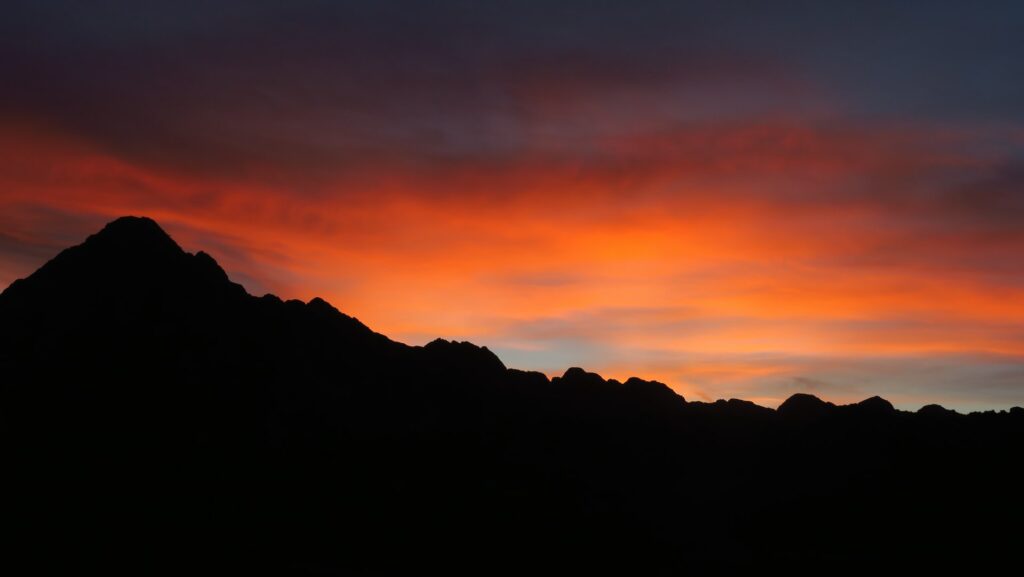
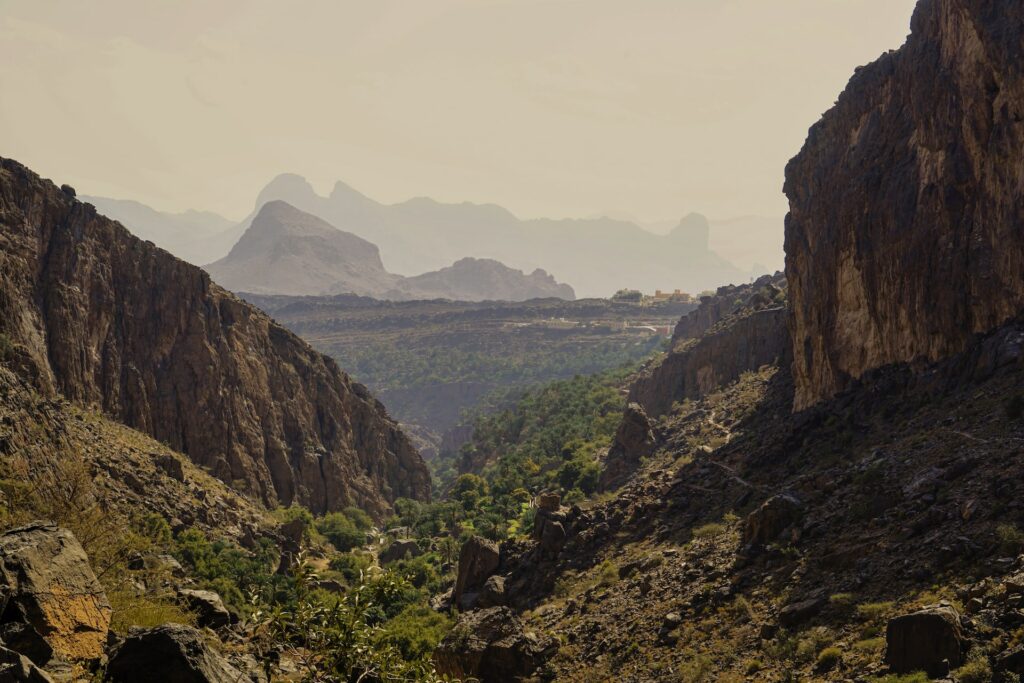
Camel caravans loaded with incense, myrrh, fine fabrics, silk, and spices have been leaving Oman for a long time. In the ancient world, it is hardly possible to find a sanctuary without the smell of incense, resin balancing with gold. Incense from Oman has even been found in the tomb of Tutankhamun, who was buried more than 3,500 years ago in the Valley of the Kings in Egypt. This is a testament to the ancient culture that flourished in Oman.
To this day Oman is a fragrant country. In every restaurant, hotel lobby, and shop, the smell of incense is constantly felt, which, however, takes different forms. This is a pleasant harmony of aromas of oriental ingredients. No less fragrant are the Omanis, who, after washing and ironing, have their white traditional clothes soaked in coals where incense or myrrh smolders.
Ibadia, the Omani branch of Islam
Arab tribes that later settled in Oman met with ethnic groups that inhabited the territory of modern Iran. The northern part of Oman for many centuries was part of the Achaemenid Persian Empire, later Oman was a dependent territory of the Parthian and then Sassanian Empire, which became the successor of the Achaemenids. The influx of Muslim Arabs put an end to Persian rule.
Islam came to Oman in the 7th century during the lifetime of the Prophet Muhammad. Since the 8th century, Ibadi Islam has been practiced in Oman, which can be called moderate but conservative, influenced by the teachings of the early Islamic sect of the Kharijites. The Kharijites disobeyed the fourth Caliph Ali in 657 and refused to arrange succession by descent, emphasizing the personal qualities of the leader. Thus, one of the main features of Ibadi is that the people choose the monarch by popular vote.
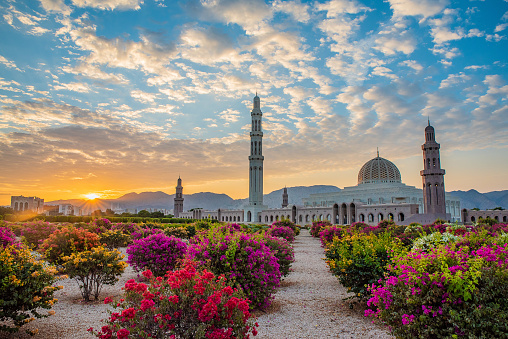
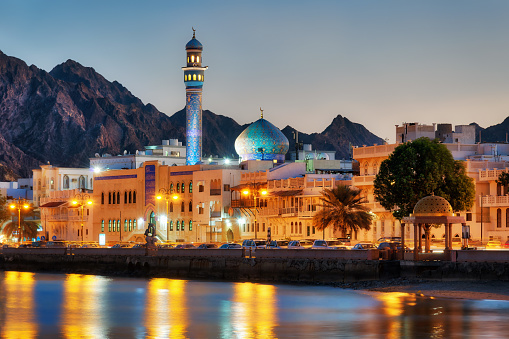
In 751, Ibadi Muslims established their imamate (a form of theocratic rule) in Oman. The imamate existed until the middle of the 20th century. Until 1970, the country’s name “Muscat and Oman” was very well used to describe two different political cultures. The Sultan ruled in Muscat, which is on the coast and is more cosmopolitan. In a country dominated by tribal traditions, imams, often independent of the Sultan, ruled according to the unchanging customs of the Ibadi sect.
Maritime Superpower
Throughout its history, Oman has faced raids by religious opponents, Iranian Shiite rulers, and even temporarily was under the rule of the Seljuk Turks. The Portuguese captured Muscat on April 1, 1515, and stayed there for short breaks until 1650, when they were expelled by the new Omani Ya’aruba dynasty. This day is celebrated as a national holiday in modern Oman.
The rulers of the Yaaruba dynasty raised the level of agriculture, expanded trade, and made Oman one of the maritime powers. The Omanis have been skilled shipbuilders since ancient times, and it was with the help of their fleet that they controlled a large territory far beyond the borders of their empire for two centuries. Omani forces drove the Portuguese out of East Africa and Mozambique and established thriving settlements in Zanzibar, Mombasa, and elsewhere on the East African coast.
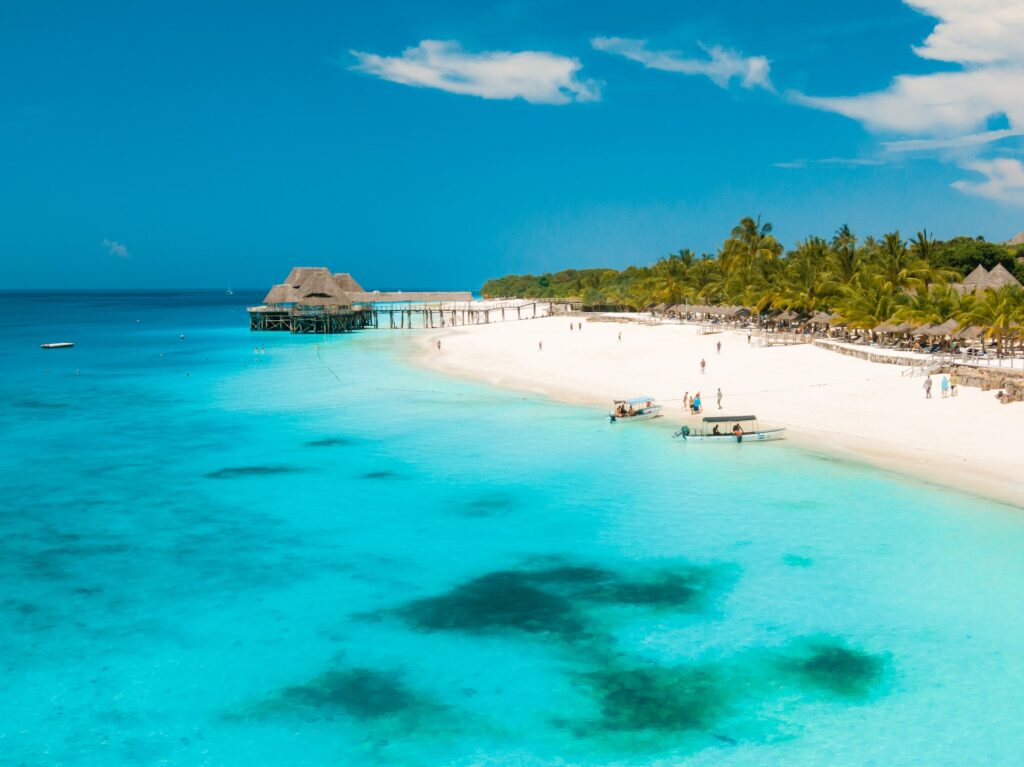
Oman is the only Persian Gulf state with its empire. In other parts of the Arabian Peninsula, the society of poor nomads was organized according to the tribal principle and no government departments were established there. Zanzibar was Oman’s second capital after Muscat. The Omanis traded briskly with the countries of East Africa and brought their culture and religion there. It can be said that Islam was brought to the east coast of Africa under the sails of the Omani dhow ships. However, it should be noted that the Omanis were actively involved in the slave trade, which was the main source of their wealth.
The end of slavery, the end of prosperity
At the beginning of the 18th century, a struggle for succession broke out in Oman, which caused a long period of civil wars. And then the Al-Busaid clan comes on the scene, from which the current ruling dynasty originates. The rulers of Al-Busaid ruled most of Oman, including African states, but when the British declared the slave trade illegal, in the mid-19th century, Oman’s prosperity plummeted. The economy collapsed and many Omani families moved to Zanzibar.
Muscat’s population fell between 1850 and 1870 from 55,000 to 8,000. Great Britain occupied most of Oman’s overseas countries, and Oman became a completely different country. In 1798, a Treaty of Friendship was signed between Great Britain and Oman, and Great Britain became the guarantor of the sultan’s government. In 1856, a crisis broke out within the ruling dynasty, and the Omani Empire was divided into the Sultanate of Muscat-Oman and the Sultanate of Zanzibar. In 1891 Muscat and Oman became a British protectorate, gaining independence only in 1951.
Castles and fortresses of Oman
Visiting all the historical monuments in Oman will not be an easy task, but you almost certainly need to see at least four of the most famous. Bahla Fort is the only Omani fortress on the UNESCO list.
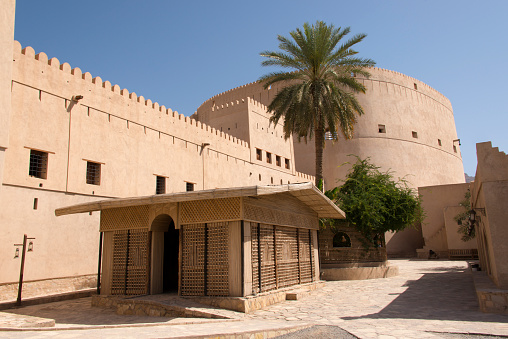
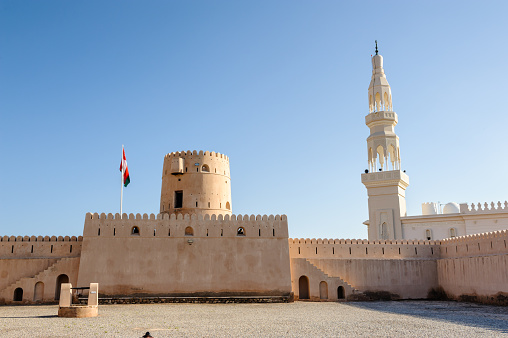
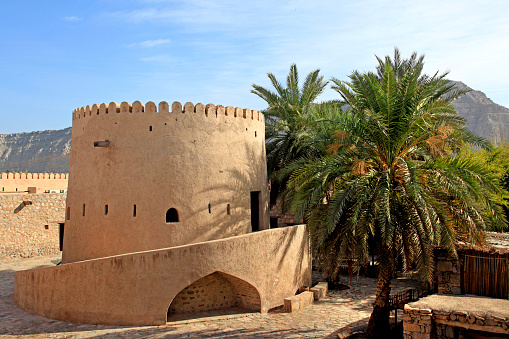
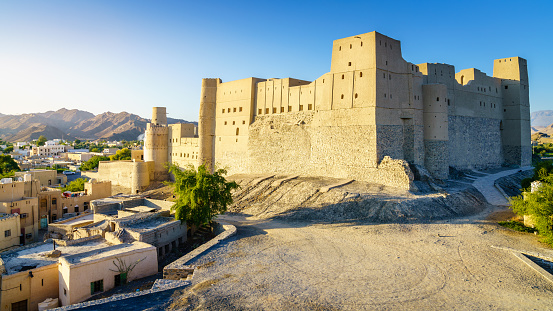
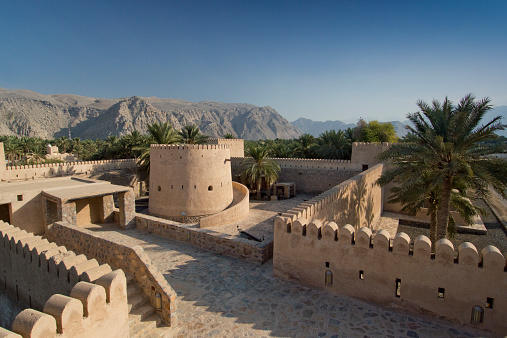
The oldest and largest fortress in Oman and the only one included in the UNESCO World Heritage List, the Bahla Fort. Its oldest part was built around 500 BC. The fortress was rebuilt many times in the past, in the 13th century, it was rebuilt by the Nabhani tribe, in the 17th century by Yaarubi, and in the 19th century by al-Busaidi. However, in the middle of the last century, the fortress was in such a deplorable state that its reconstruction, which began in 1988, lasted until 2012. The fortress is very large, with many towers, mosques, and wells. Her tour will take two to three hours.
Nahal, a fortress in the middle of an oasis
The hotel is a popular destination for both local and foreign visitors. Many believe that the fortress stood here in pre-Islamic times, about 1500 years ago. Nahal Oasis, in the middle of where the fortress is built, is located about 120 km from the capital Muscat. This fortress has also been restored many times, the last modifications occurred in 1990.
Unlike other important fortresses, the fortress in Nahal never became the residence of the ruling imam or sultan. The fortress does not have the usual floor plan, instead, it repeats the irregular shape of the rock on which it is built. In the lower part of the fortress there is a mosque, a well and a data warehouse, in the upper floors of the fortress there is the residence of the ruler, vali, reception rooms for men and women, and children’s rooms.
Jabrin Castle
This castle is the most beautiful monument in all of Oman. It was built at the end of the 17th century by Imam Sultan Al Yarubi. Jabrin Castle differs from other Omani buildings in that it was built not during the war, but as a period of peace and prosperity. Therefore, there are no fortifications in it, and it looks more like a palace than a fortress.
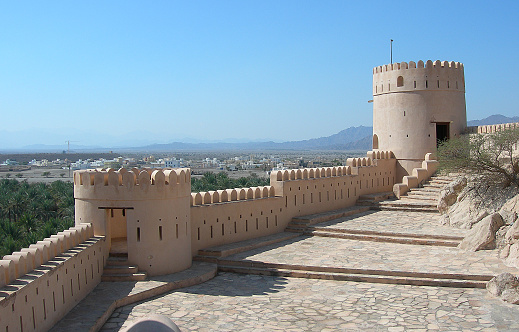
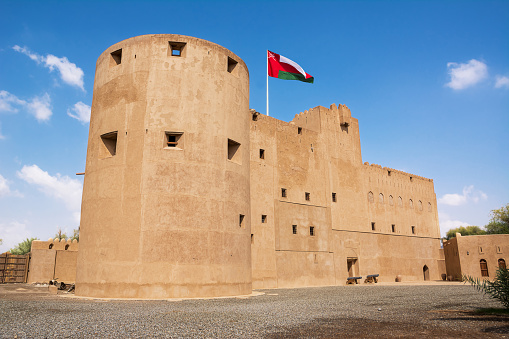
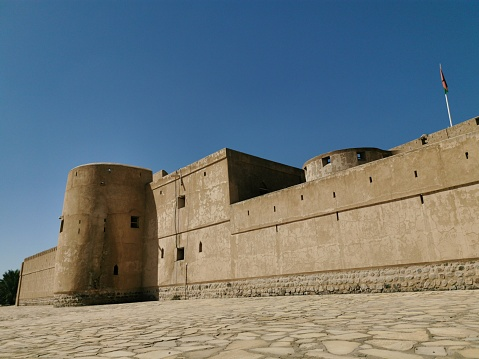
Imam Belarab was a fan of science and art, and the construction of the palace corresponded to this. The three-story building with two towers, several reception halls, banquet halls, and halls also has a library and a religious school (madrasah). The interior of the castle is distinguished by painted windows, wooden balconies, calligraphic inscriptions on the vaults, and amazing decorative ceilings. The most beautiful room of the castle, the hall “Sun and Moon”.
Nizwa, the former capital of Oman
Another popular tourist attraction of Oman is the fort in the city of Nizwa, which was from the middle of the 8th century to the middle of the 12th century, the capital of Oman, ruled by Omani imams. Nizwa Fort is a perfect example of how the Omanis have lived for centuries. The oldest part of the fortress was built in the 9th century, the current form remains from the works of the 17th century. The fortress is unique in that its tower is round, as well as the largest of all Omani towers.
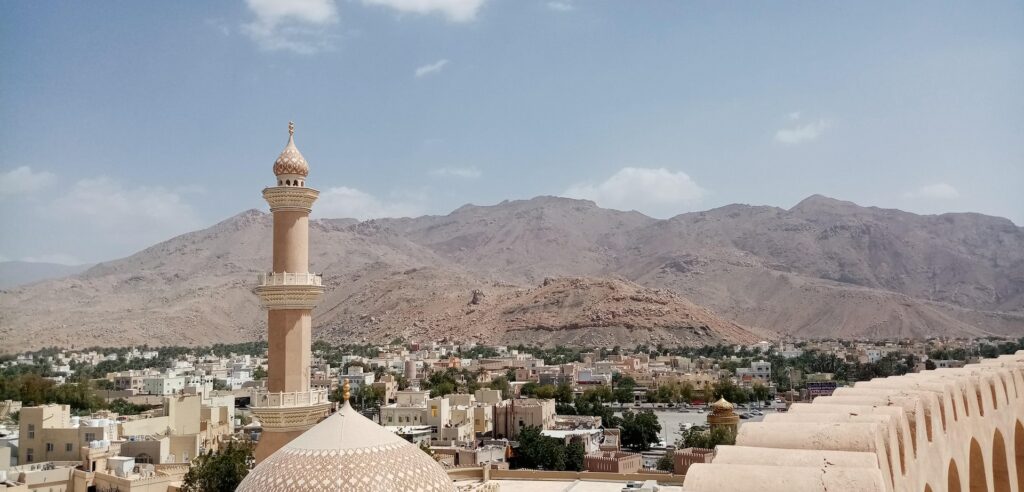
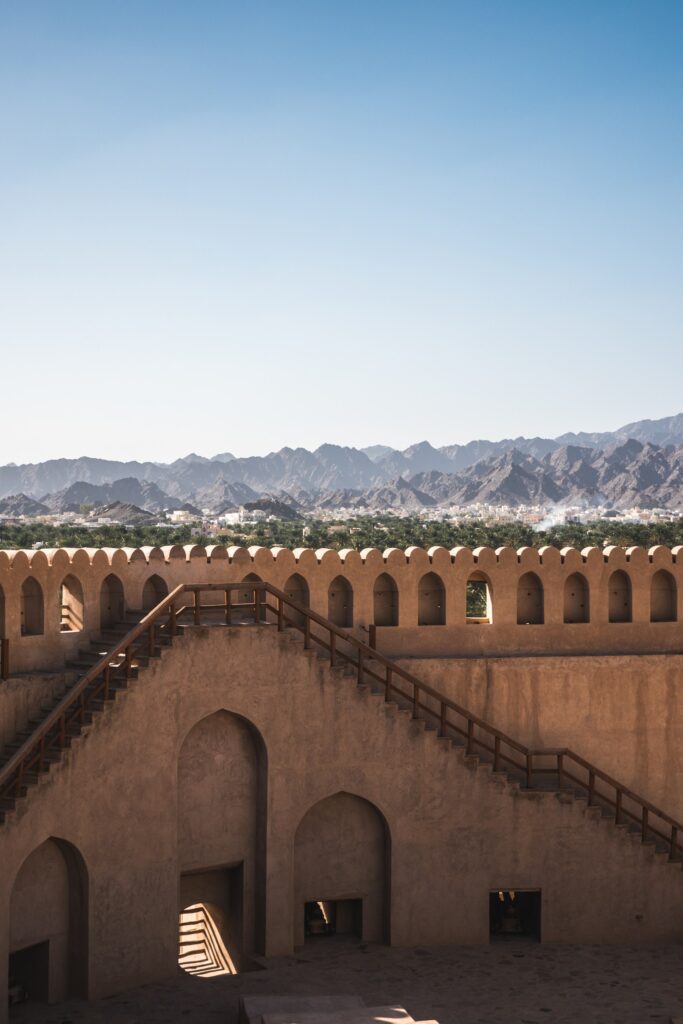
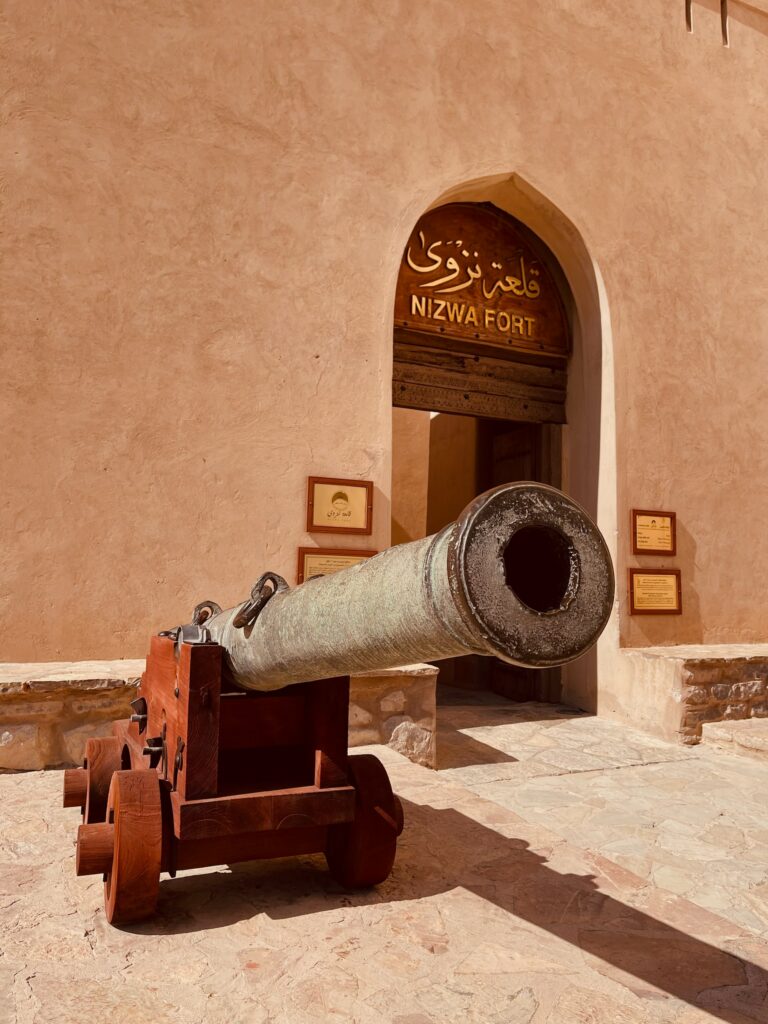
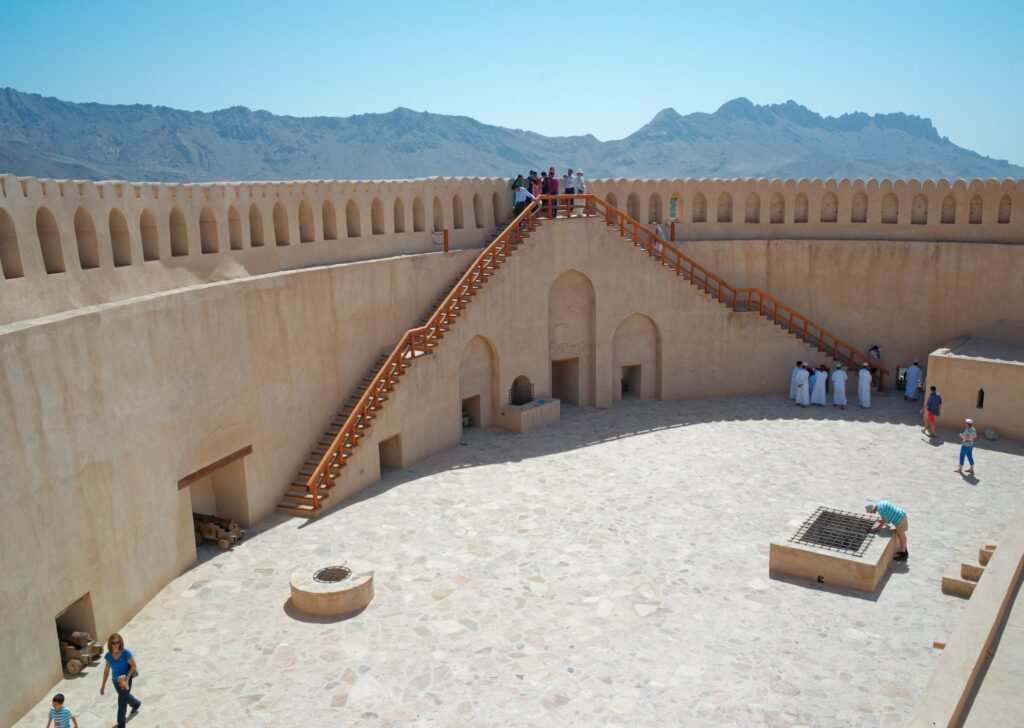
The fort in Nizwa has seven wells, several prisons, and a courthouse. The main tower has a variety of defense mechanisms, such as honey traps that pour warm date honey over the attackers and various loopholes. Visitors can see a lot of museum exhibits in the fortress. Visiting Nizwa Fort is a good way for any visitor to Oman to learn about the Omani lifestyle that was prevalent in the country in the past.










